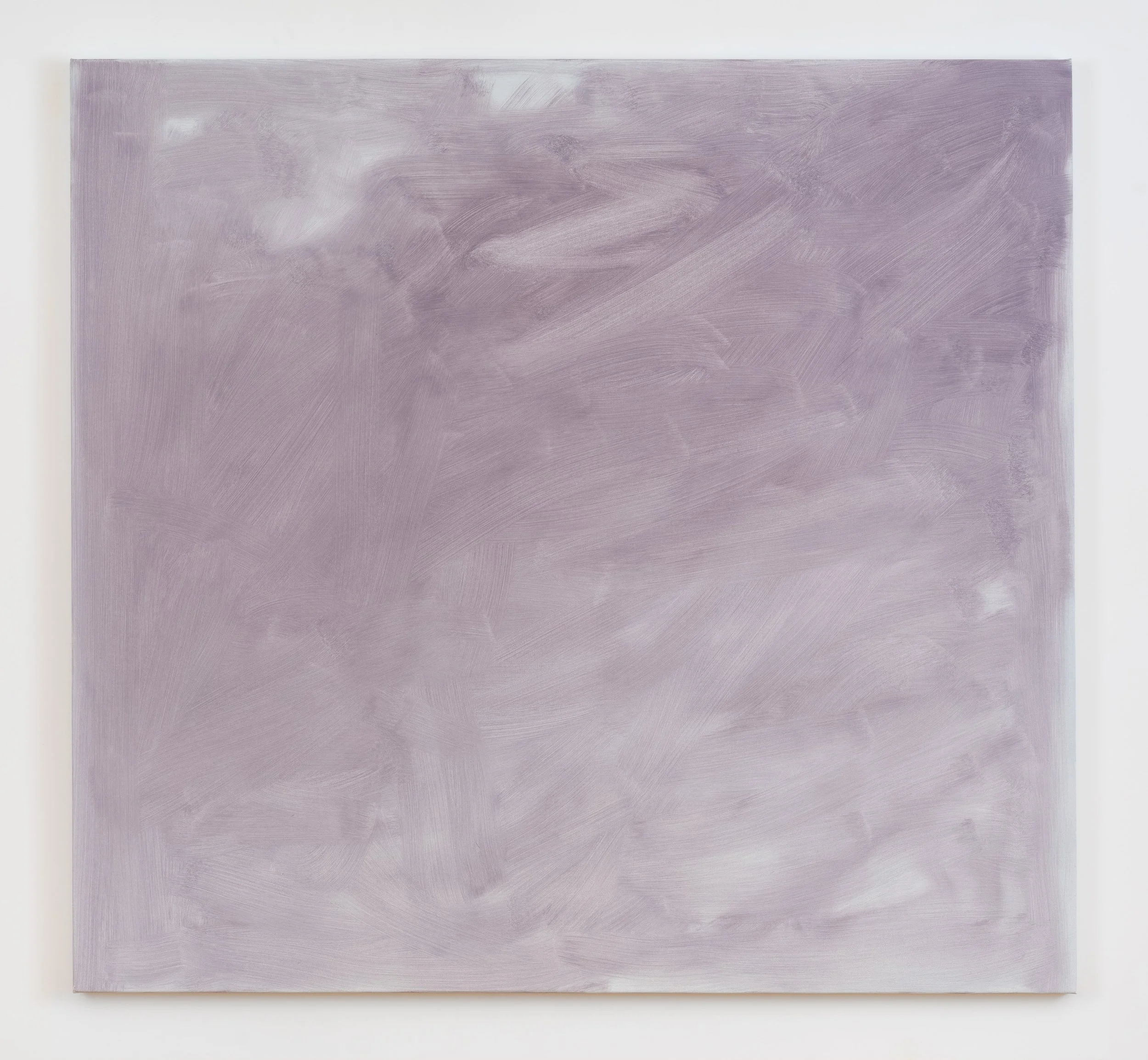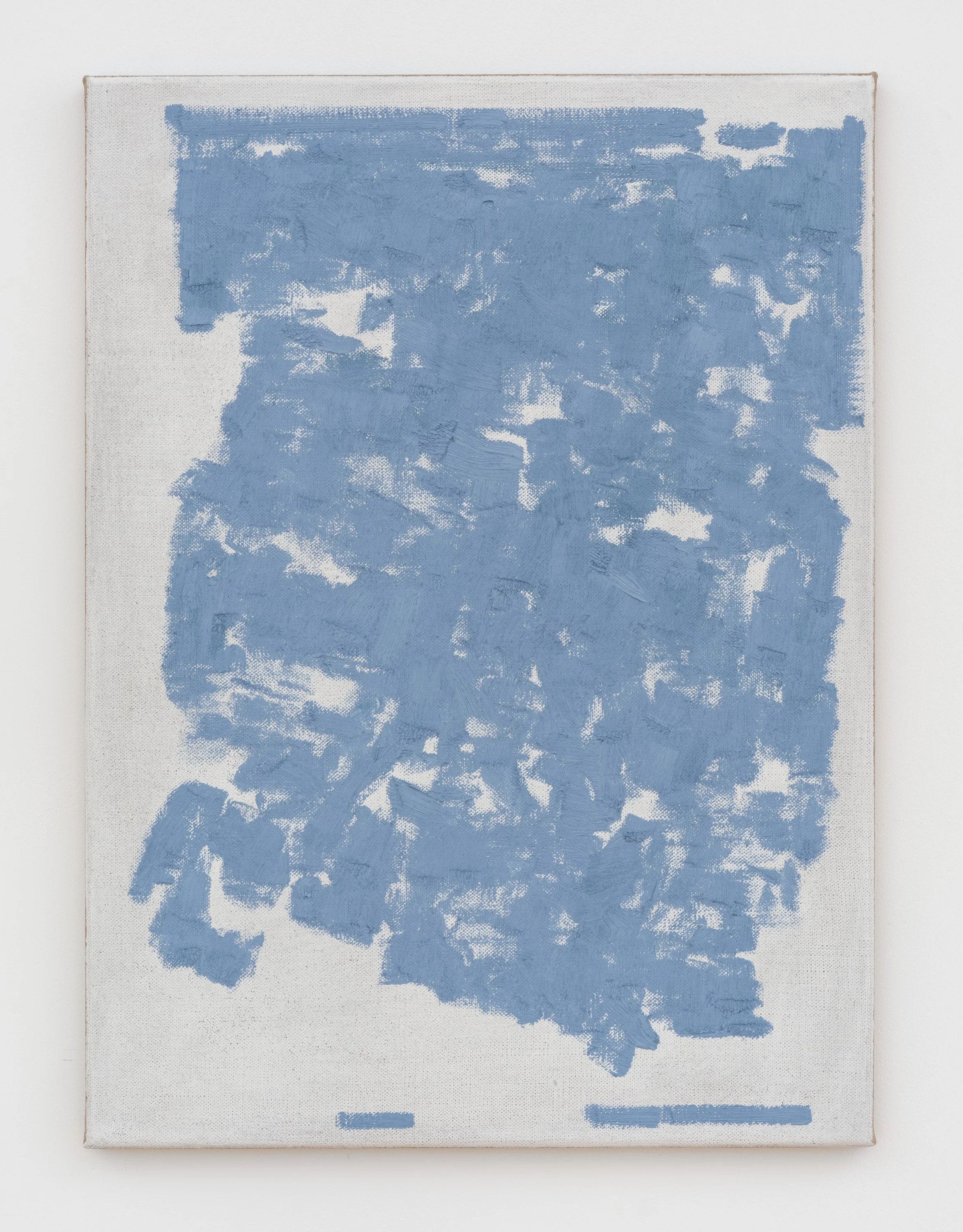Windbreak: Meditations on John Zurier
The work of John Zurier encapsulates a highly varied and complex lived experience that includes his travels, observations, and ruminations. Sometimes brush strokes come to an abrupt halt, and the viewer is suspended; others seem to extend beyond the peripheral, going on forever and out of sight. Zurier paints vast expanses: landscapes with no clear beginning or end, which offer the viewer a glimpse of grandeur, clarity, and possibly, a destination. The works shown in John Zurier’s upcoming exhibition, Pink Dust at Peter Blum Gallery, is comprised of compositions he painted within the last two years while in Iceland. The influence of Iceland on the composition and execution of these works is both ethereal and physical. As one scans the brushed horizons of the canvas, gusts of southern wind and clouds of quiet powder reveal themselves. The cold climate that contributed to the creative inspiration for this body of work contrasts with the warm welcome they offer in a gallery setting—a balance that is carefully monitored.
Convalescent (2025) is a strong starting point to set a foundation of understanding for Zurier’s body of work. The flakey frozen edges of the canvas are both the frosty windshield and the favorite storefront window, familiar and forgotten; the warm white etching appears to claw towards the center from the foggy perimeter of memory. Associations with this visual motif vary depending on the individual, but its stubborn and frigid demeanor is unwavering. The sentiment of Zurier’s recent work is reminiscent of a fresh snowfall, followed by its inevitable disruption from a stiff breeze or passerby. Some works represent this notion directly, including what appears to be footprints in Leaving Reykjavík (2024), or a field of snow matted down after a children’s day of playing in May, Morning Evening (2025). Other works represent this more indirectly, like the case of Untouchable Wind (2025), a strikingly abstract composition by comparison. There is a noticeable fluctuation between the use of material and immaterial concepts as subject matter in Zurier’s work, effortlessly stimulating intrigue and curiosity in viewers.
Zurier has cited the wind as a notable inspiration for many of the works in this show, with texture and movement clearly depicted on the surface of the canvas. Though seemingly simple, wind as a subject is uniquely challenging. We experience wind tactilely; however, it takes only a moment to recognize that we see “wind,” truly, through only how it interacts and impacts what is around us. Zurier’s impossible undertaking, to reflect the vicious nature and volatile tantrums of wind, seems to draw attention to this fact: what may not be observable may still be real and felt.
Zurier’s meditative practice can be interpreted as a vehicle for expressing complex human emotion and the universality of the human experience. This substantiates the familiar nature of the artwork, serving as a welcome presence in the increasingly complex realm of contemporary art. In many cases, the size of the canvas is more akin to a small window or porthole than a barn door or gateway. This creative liberty serves as an important reminder that artwork does not need to be expansive to be impactful. May, Morning Evening (2025) embodies this truth: absence is presence. As swathes of blue patchwork the canvas, one can't help but remember the forgotten snowmen, the hilly sledding, or midday cartoons, meeting the unexpected winter wind with a red-nose readiness for what comes next. Each seemingly blank space serves as an inhale or exhale, a pause not only to look, but to see.
The artwork in this show is a true indication of Zurier’s ability to synthesize physical actions into a form of digestible visual stimuli. Some paintings are pulling and some are pushing, while others are bubbling or completely still. When presented in a room together, they speak to one another in hushed conversation and swallow the room in silence like the muffling effect of snowfall. The grounding pillars of traditional painting have been forfeited here, creating space for new happenings. John Zurier’s answer to this vacancy is methodical and one that encourages the viewer to stop and think, or risk missing a snow day.
John Zurier: Pink Dust is on view at Peter Blum Gallery from September 5 through November 1, 2025.



